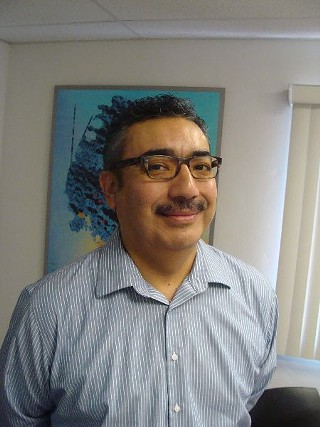Javier Durán, a UA professor of Spanish and border studies, is the director of the UA's Confluencenter for Creative Inquiry. The program started a year and a half ago to bring fine arts, humanities, social sciences and behavioral sciences faculty and departments together to support interdisciplinary projects and research. Another goal is to present those projects and other UA goings-on to the greater community. For more on the center, visit the Confluencenter website.
Tell me about the center.
The center is part of a research component at the university. We just moved to a permanent office across from the College of Business on Helen Street this past March, and we've just finalized our team. We're a small team, but we are doing good work. We are in a curious position as a non-instructional unit, and therefore, we don't have students or faculty or tenure here, and we don't really have students or alumni. ... We are trying to fundamentally promote innovative and collaborative research, mostly dealing with the faculty and students of three colleges: Fine Arts, Humanities, and Social and Behavioral Sciences. These are three very different groups, but this provides a rich opportunity for these colleges and their students to collaborate. ... For the first time, we have an entity that is looking at the familiarities across many fields.
What is the benefit of this kind of collaboration?
Well, the idea, as I told one of our students, is that we are forced to think outside of the box to bring together people—for example, a linguist, an anthropologist, a historian, a musician, a scientist and/or a writer. In a way, we had that going on at the university before, but we never had the proper space or department to seek funding opportunities for that work and showcase what we are doing outside of the different disciplines. And that's the other thing that is important: public engagement. We believe we do wonderful things on campus, but most of the time, nobody knows. Part of our mission as a land-grant university is to bring that out into the community. That is important.
How did the center start?
Three years ago, when the university was experiencing change and looking at transformation, some areas of interest were identified, and out of that came the idea of how to create a space for this kind of collaboration. A group of faculty from the three colleges was called to serve on a committee, and we became this brainstorming group, talking about what it is we wanted to see. In the spring of 2010, we had a large meeting of 120 faculty from the three colleges and did a huge workshop. At the end, it was recommended (that we create) a center, funded from UA funds, that should recognize the value of interdisciplinary work at this university. I was part of the original group.
What was your interest in starting the center?
My interest comes from my own interdisciplinary work. It was a natural fit for me. I do have a weird background in plant science, Hispanic literature and border studies. It's as if I've been almost retraining myself. ... I am really, really excited about this effort, and we are growing and expanding, and we're providing funding.
How does funding work?
The first stage was, in fact, that funding from the UA was going to fund internal projects from our faculty and students. ... We have also been learning how other folks at the UA think about research that needs to be funded. (For example), we recognize that in the fine arts, they do different things in different ways. We also see our role in educating our colleagues in grant-writing. A long-term goal is self-sustainability, but in the meantime, it is hard to do that with people who are not used to writing grants.
How do you look at proposals?
We have a call for proposals, and have a subcommittee in the three areas that evaluate the proposals. We're trying to look for those projects that adhere to our mission, but they need to be innovative and collaborative. ... Sometimes two people, one in English and one in sociology, will put a proposal together and make something up, but it becomes artificial, and you can tell it's not organic. We look for a project that is a true collaborative effort that brings people from one or more disciplines to the table, and I think we've been successful in terms of what we've been able to fund. ... At the end of the day, we are bringing people and projects together. As we grow, we hope we are going to have the mechanism to bring the results of the projects to the community.





